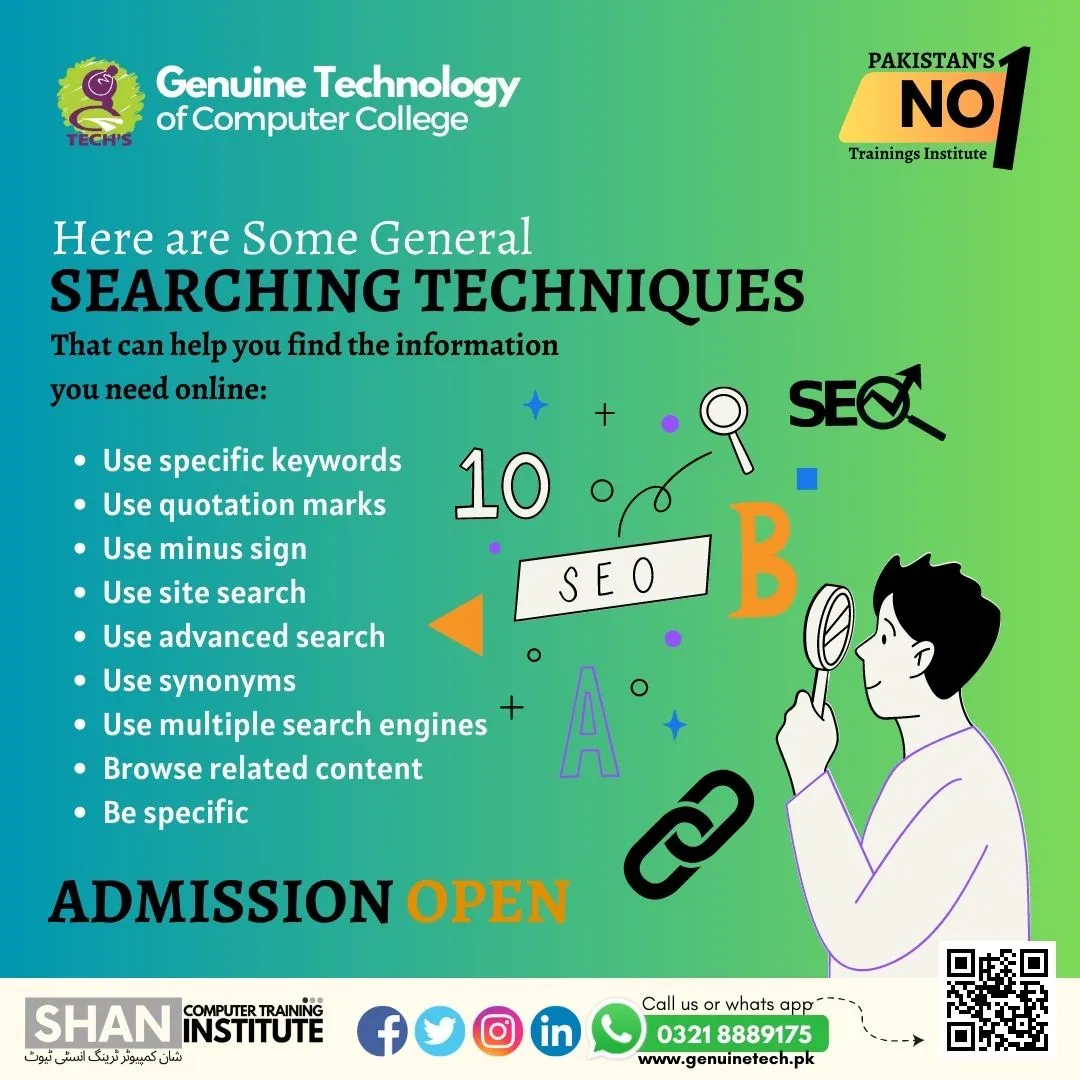Search Engine Marketing Strategy Examples
What is an example of search engine marketing? - google ads course in lahore
Genuine Tech is offering Search Engine Marketing (SEM) course for the candidates to learn the advertising and promoting their websites on search engine result pages which may help their businesses to grow to the new heights and increase their online visibility. You can learn this best SEM Course by working on real-world projects and websites under the supervision of highly qualified instructors to enhance your skills and provide you the best search engine marketing tips and strategies for generating more traffic to your websites so you can earn a lot of money in this SEM training course we may include the following strategies of SEM which can beneficial for your business;
- Pay-Per-Click (PPC) advertising
- Sales copy of the products
- Site design
- Reverse image search
- Determining your key demographics
- Remember the customer
- Monitor competitor’s backlinks
- Infographics
Search engine marketing is one of the best seo course for the candidates to enhance their skills and earn money online by developing their own business you need to work with motivation and aim high to start your online business with this SEM course you can learn the strategies and techniques through which you can promote your business and become successful in this online marketing business you can track your success and other campaigns as well which may helpful in driving accurate and best results for you for leading more sales.
Conclusion
Genuine Tech is one of the best computer training Institute in Pakistan well known for their best computer courses you can learn SEM marketing strategies and start your own successful business online and earn money online from internet and become successful and the benefits of search engine marketing may include the brand awareness, fast visibility, increases traffic to your website, can target ads based on location and many more.
Visit educba.com to get detail about search engine marketing strategies that is beneficial for business.


If you want to get further details and update about computer trainings course don't hesitate direct whatsApp chat, call or visit and follow Facebook page, Instagram and get more information LinkedIn accounts
